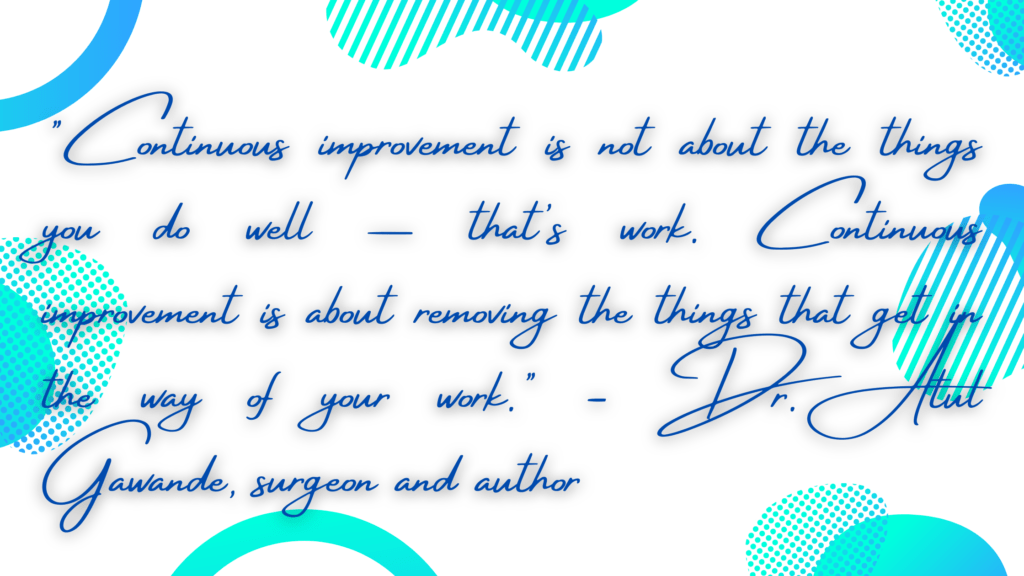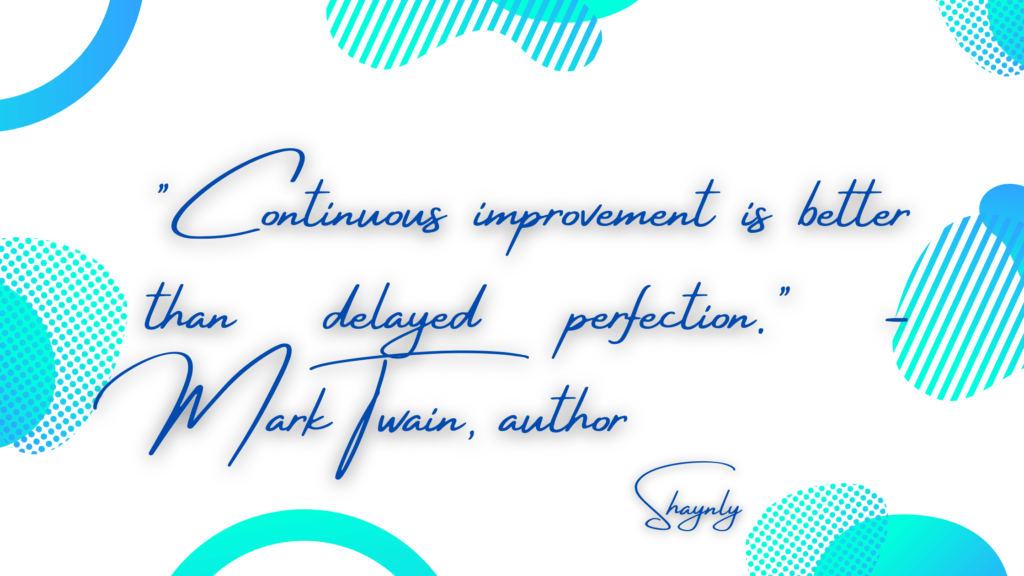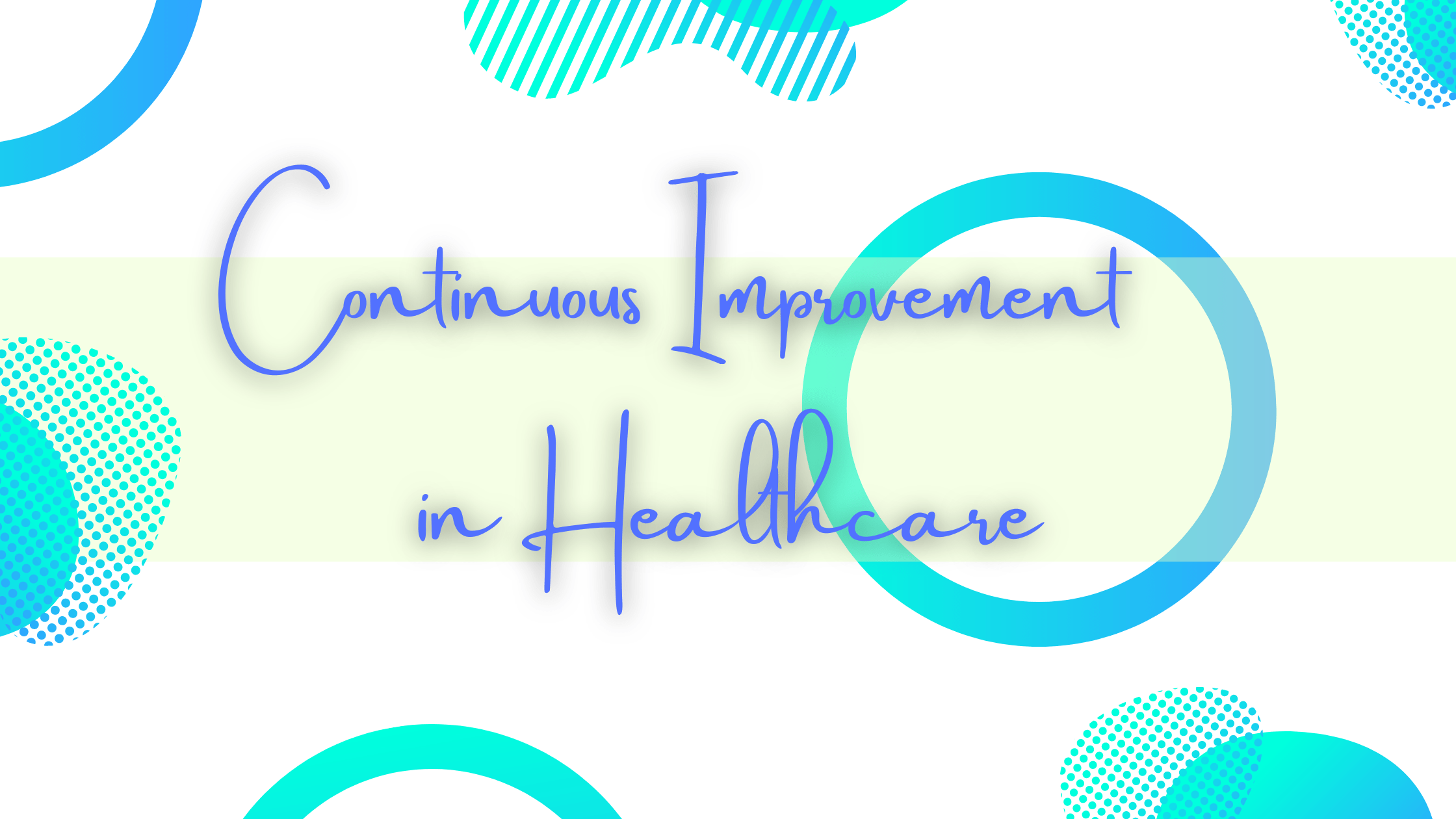What is continuous improvement in healthcare?
Continuous improvement is a vital component of healthcare quality management. According to the Institute of Medicine, healthcare organizations must continually strive to improve the quality and safety of care they provide to patients (Institute of Medicine, 2001). Continuous improvement can help healthcare organizations achieve this goal by identifying areas for improvement, implementing changes, and monitoring outcomes to ensure that the changes are effective.
Continuous improvement in healthcare is essential because it allows organizations to respond to the changing needs and expectations of patients and society. For example, as new treatments and technologies become available, healthcare organizations must adapt their processes and procedures to incorporate these innovations. Continuous improvement can help healthcare organizations stay up-to-date with best practices and provide the highest quality care possible.
Moreover, continuous improvement can benefit both patients and healthcare organizations. Patients can benefit from improved safety, better outcomes, and a more positive experience of care. Healthcare organizations can benefit from increased efficiency, reduced costs, and improved staff morale.

Despite the many benefits of continuous improvement, healthcare organizations face several challenges in implementing and sustaining it. For example, healthcare organizations must navigate complex regulatory environments, deal with competing priorities, and address staff resistance to change. Healthcare organizations must also invest in training and resources to support continuous improvement initiatives.
To overcome these challenges, healthcare organizations must develop a culture of continuous improvement that values learning, experimentation, and innovation. Healthcare professionals must be empowered to identify areas for improvement and implement changes in their own work processes. Healthcare organizations must also invest in data collection and analysis tools to monitor the effectiveness of continuous improvement initiatives and identify opportunities for further improvement.
Methods for Continuous Improvement in Healthcare:
Continuous improvement in healthcare involves using various tools and methods to identify areas for improvement, implement changes, and monitor outcomes. Some common methods used in continuous improvement in healthcare include Plan-Do-Study-Act (PDSA) cycles, Lean Six Sigma, and the Model for Improvement.
Plan-Do-Study-Act (PDSA) cycles involve a four-step process: planning the change, implementing the change, studying the results, and acting on what was learned. PDSA cycles are often used to test small changes in a controlled environment before implementing them more widely.
Lean Six Sigma is a data-driven methodology that focuses on identifying and eliminating waste and variation in processes. Lean Six Sigma uses a five-step approach: define, measure, analyze, improve, and control. Lean Six Sigma can be used to improve the efficiency and quality of healthcare processes, such as reducing wait times and improving medication safety.
The Model for Improvement is a framework developed by the Institute for Healthcare Improvement that consists of three questions: What are we trying to accomplish? How will we know that a change is an improvement? What changes can we make that will result in improvement? The Model for Improvement emphasizes the importance of setting specific, measurable goals and using data to track progress towards those goals.
In addition to these methods, healthcare organizations can also use other quality improvement tools such as root cause analysis, failure mode and effects analysis, and rapid improvement events. Root cause analysis is used to identify the underlying causes of problems or adverse events. Failure mode and effects analysis is used to proactively identify potential failures and their impact on patient safety. Rapid improvement events, also known as Kaizen events, are focused improvement projects that involve a team of staff members working together to solve a specific problem or improve a process.
Overall, the choice of method or tool for continuous improvement in healthcare depends on the specific needs and context of the organization. Regardless of the method used, continuous improvement requires a commitment to ongoing learning, experimentation, and innovation.
Challenges to Continuous Improvement in Healthcare:
While continuous improvement in healthcare can lead to better outcomes for patients and more efficient processes for healthcare providers, there are several challenges that can hinder its implementation.
One challenge is a lack of resources. Implementing continuous improvement initiatives requires time, money, and personnel. Healthcare organizations may struggle to allocate these resources in the face of competing priorities, such as meeting regulatory requirements or responding to emergencies.
Another challenge is resistance to change. Healthcare providers may be reluctant to change established practices, even if there is evidence that a change would lead to better outcomes. Resistance to change can be particularly strong when the change is perceived as a threat to professional autonomy or job security.
A related challenge is a lack of buy-in from key stakeholders. For continuous improvement initiatives to be successful, it is important to involve and engage staff members at all levels of the organization, from frontline providers to senior leaders. Without buy-in from key stakeholders, initiatives may stall or be abandoned altogether.
A lack of data or ineffective use of data can also be a barrier to continuous improvement. Data is essential for identifying areas for improvement, monitoring progress, and evaluating the impact of changes. However, healthcare organizations may struggle to collect or analyze data effectively, or may not have access to the data they need.
Finally, a lack of a culture of continuous improvement can be a significant barrier. In order for continuous improvement to be successful, it must be embraced as a core value and embedded in the organization's culture. This requires leadership support, ongoing training and education, and a willingness to learn from mistakes and failures.

To overcome these challenges, healthcare organizations can take a variety of steps, such as:
- Engage staff and stakeholders: Involving staff and stakeholders in the continuous improvement process can help build buy-in and support for initiatives.
- Prioritize resources: Healthcare organizations should prioritize resources to initiatives that have the greatest potential for impact and return on investment.
- Break down silos: Healthcare organizations can break down silos by encouraging collaboration across departments and teams.
- Improve data quality: Healthcare organizations should invest in systems and processes to improve the quality of data available for continuous improvement initiatives.
- Stay informed: Healthcare organizations must stay up-to-date with regulations and guidelines to ensure compliance while still pursuing continuous improvement initiatives.
By addressing these challenges head-on and implementing strategies to overcome them, healthcare organizations can successfully implement continuous improvement and achieve lasting improvements in quality and patient outcomes.
Benefits of Continuous Improvement in Healthcare:
- Improved patient outcomes: Continuous improvement initiatives can lead to better patient outcomes, such as reduced rates of complications or improved quality of life. This can result in greater patient satisfaction and better health outcomes overall.
- Increased efficiency: By identifying and eliminating waste, healthcare organizations can become more efficient and reduce costs. This can help to free up resources that can be used to improve patient care.
- Enhanced safety: Continuous improvement initiatives can help to identify and mitigate potential safety hazards, such as medication errors or falls. This can lead to a safer healthcare environment for both patients and providers.
- Improved staff satisfaction: By involving staff members in continuous improvement initiatives, healthcare organizations can help to foster a culture of engagement and teamwork. This can lead to greater job satisfaction and lower rates of staff turnover.
- Enhanced reputation: Healthcare organizations that are committed to continuous improvement and can demonstrate positive outcomes may be seen as leaders in their field. This can lead to greater visibility and recognition within the healthcare community.
- Better financial performance: By reducing costs and improving outcomes, healthcare organizations may be able to achieve better financial performance. This can help to ensure the long-term sustainability of the organization.
In conclusion
continuous improvement is an essential aspect of healthcare organizations seeking to provide high-quality patient care. By implementing continuous improvement initiatives and utilizing tools and techniques such as process mapping, root cause analysis, PDSA cycles, Lean Six Sigma, and Kaizen, healthcare organizations can identify inefficiencies, reduce medical errors, and achieve sustainable improvements in patient outcomes. Continuous improvement requires a commitment to ongoing learning, data analysis, and collaboration among healthcare professionals. Ultimately, by adopting a culture of continuous improvement, healthcare organizations can ensure that they are providing the best possible care to their patients.
Source
- National Academy of Medicine. Leading Health System Transformation: Strategies for Developing and Implementing a Comprehensive Health System.
- Institute for Healthcare Improvement. Science of Improvement.
- Langley, G. J., Moen, R. D., Nolan, K. M., Nolan, T. W., Norman, C. L., & Provost, L. P. The Improvement Guide: A Practical Approach to Enhancing Organizational Performance. Jossey-Bass.
- Ovretveit, J., & Gustafson, D. Evaluation of quality improvement programmes. Quality and Safety in Health Care, 11(3), 270-275.
- Baldrige Performance Excellence Program. Health Care Criteria for Performance Excellence.

